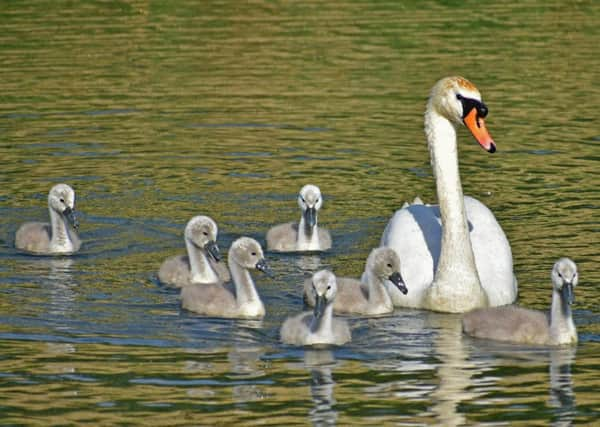This tame breed of swans were the first to have royal protection


Within moments, the male - known as the cob - demonstrated that when confronted with danger these birds are anything but mute.
At first, a small and extremely noisy shih tzu had been treated with disdain by the cob. But when the female swan, the pen, was subjected to the same yapfest her mate’s patience cracked and it directed at the dog a series of hisses as loud as a steam train’s.
Advertisement
Hide AdAdvertisement
Hide AdThe shih tzu was last seen scurrying along the canal in the direction of Brighouse, pursued by its owner.
The mute swans’ vocabulary also includes grunts like discordant notes from a trumpet and even a deep growl, but compared to other species of swan they don’t have a wide repertoire of calls, thus the name.
In flight, though, they compensate for this with what the poet WB Yeats described as the “bell-beat of their wings”.
Another characteristic which sets them apart from the two swans also found in the UK - whooper and Bewick’s - is their tameness. Consequently, most birdwatchers pay mute swans little attention, which is a shame because in addition to being one of our most visually striking birds they are also richly entwined with British history.
Advertisement
Hide AdAdvertisement
Hide AdThey were highly prized by kings as a bird for the table, each providing up to 20lb of meat, and there are records of Henry III ordering mute swans from across the north of England to be brought to his Christmas court at York in 1251.
His son and successor, Edward I (1239-1307), formally associated mute swans with the crown by having one on his badge of state, and during the reign of Edward III (1327-1377) it was the first British bird to receive legal protection. This was not because of conservation concerns, but to keep them for royal banquets. The nobility were also granted the right to keep flocks.
But what does swan taste like? “Fishy mutton,” according to one early cookbook, while Charles Darwin said it was neither fish nor fowl but something halfway, “like venison with wild duck.”
Thankfully, eating swan fell out of favour more than a century ago and today there is no money for poachers helping themselves as they do with pheasants.
Advertisement
Hide AdAdvertisement
Hide AdA significant threat to the swans’ welfare used to be lead poisoning from anglers’ weights, which was blamed for some 3,370 deaths a year in England, but since the use of lead weights was banned in 1987 mute swan numbers have recovered.
One of the biggest flocks of mute swans in Yorkshire can be observed at the RSPB’s Fairburn Ings reserve in the Lower Aire Valley.
Thanks to ringing, we know that the birds move about quite a bit. One ringed in Northumberland was found at Thorpe Perrow near Bedale in North Yorkshire, while another that has been ringed at Bishopthorpe, York, turned up at Fountains Abbey.